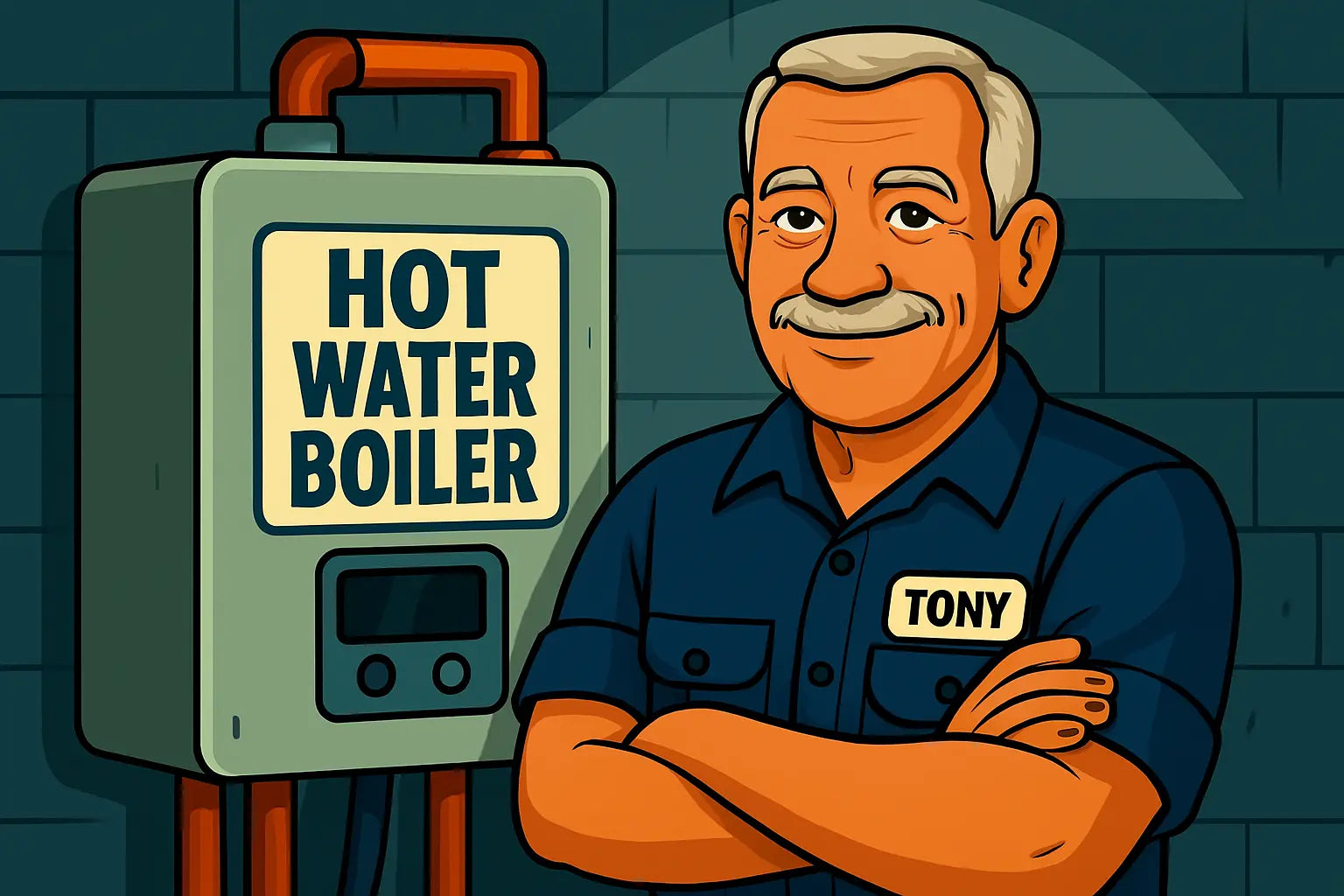Hey There from Tony
Alright, DIYers — Tony here. Flushing your hot water boiler might sound like a job for the pros, but with the right tools and know-how, you can tackle it yourself and save some serious cash. A proper flush removes sediment and sludge that builds up inside the system, helping your boiler run efficiently and last longer.
But don’t go in blind. Flushing involves water, heat, and sometimes nasty sludge, so there are a few safety rules you need to follow. Stick with me and I’ll walk you through it step-by-step, no tech jargon, no fluff. Just solid, straightforward advice.
Ready? Let’s dive in. 🔧💦
Why Flush Your Boiler?
Over time, boilers collect minerals, rust, and sludge that settle in the pipes and heat exchanger. This gunk can:
-
Reduce heat transfer efficiency
-
Cause uneven heating or noisy pipes
-
Stress your circulator pump
-
Lead to costly breakdowns if ignored
According to Energy.gov’s guide on boiler maintenance, regular flushing can restore system efficiency and reduce fuel costs. So if your boiler hasn’t been flushed in a couple of years, this might be the perfect weekend project.
Tools & Materials You’ll Need
Before you get started, here’s the gear you’ll want on hand:
-
Garden hose (at least 25 feet)
-
Bucket (for initial flush water)
-
Adjustable wrench
-
Screwdriver
-
Wet/dry shop vacuum (optional but helpful)
-
Boiler cleaner solution (optional, but great for stubborn sludge)
-
Protective gloves and goggles ⚠️
-
Towels or rags for spills
You can check out HeatingHelp.com’s tool recommendations for flushing and maintenance gear if you want to see exactly what pros use.
Step 1: Turn Off the Boiler & Let It Cool
Safety first — shut off power to the boiler at the breaker box, and turn off the fuel supply (gas or oil). Let the system cool down for at least 2 hours before you start to avoid burns or scalding.
Never flush a hot boiler. You risk serious injury and damage.
For more safety tips on boiler servicing, check out the U.S. Department of Labor’s OSHA boiler safety standards.
Step 2: Drain the Boiler
Locate the drain valve at the bottom of the boiler. Connect your garden hose and run the other end to a suitable drainage area outside or into a large bucket.
Open the drain valve and let the water run out. This initial flush removes loose sediment.
Pro tip: If you see a lot of sludge or rusty water, you might want to repeat this step a couple of times.
Step 3: Flush the System
Once drained, close the drain valve and open the fresh water supply valve to let clean water flow through the system. Flush until the water runs clear.
For stubborn buildup, you can add a boiler cleaning solution. Follow manufacturer instructions carefully and make sure you use a cleaner rated for your boiler type.
Here’s a helpful article on how to properly flush a boiler system if you want more detail on cleaning solutions and advanced tips.
Step 4: Refill & Bleed the System
Close the drain valve, then open the fill valve slowly to refill the boiler with water. You’ll hear air escaping; open bleed valves on your radiators or baseboards to release trapped air.
Use your boiler’s pressure gauge to ensure the pressure is back within normal range (usually 12-15 PSI cold). If you want a detailed guide on bleeding radiators properly, check out This Old House’s radiator bleeding tutorial.
Step 5: Turn the Boiler Back On & Check for Leaks
Restore power and fuel supply. Turn on your thermostat and monitor the system for leaks or unusual noises.
If you spot any leaks or pressure drops, call a pro. Don’t risk damaging your system.
When to Call a Pro
If at any point you feel unsure or run into complications—like stubborn sludge that won’t flush, broken valves, or unclear error codes—don’t hesitate to call a licensed technician. Some flushing jobs require specialized equipment or chemical treatments that only pros should handle.
The folks over at Heating Help have a solid write-up on when it’s time to bring in the experts.
Final Thoughts from Tony
Flushing your boiler isn’t glamorous, but it’s one of the smartest things you can do for your heating system. It keeps your home cozy, cuts down on fuel bills, and helps avoid emergency breakdowns during the coldest months.
If you keep your system clean and maintained, you’ll save yourself headaches and money down the road. And if you’re ready for a new boiler, don’t forget to check out the Weil-McLain collection at The Furnace Outlet for reliable, efficient options.
Having weird noises from your boiler? Visit my guide: When Boilers Get Loud.
Stay safe, stay warm, and happy flushing! 🔧🔥
—Tony, the trusted tech







